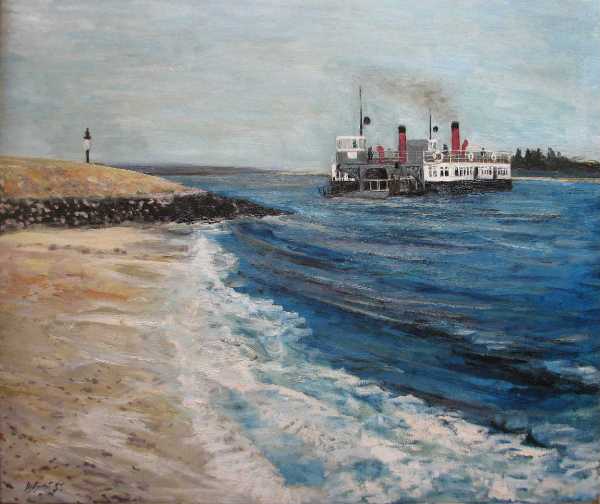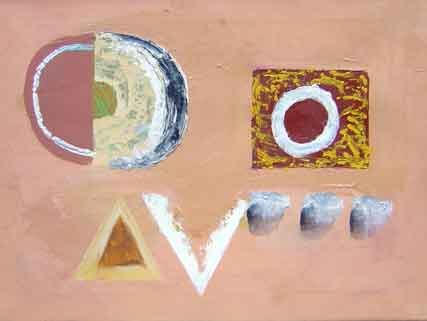Paintings.
Alistair Grant painted not so much the attenuated sheaths of things,
but signs for them. Signs and signals from the interior,
indicative of a richer experience and knowledge of life than
is generally allowed by the naturalism of external
appearances.
They have something in common with the ideograms of Miro, those symbolic forms. But Grant's paintings are not simply knowing images, they are traces of real emotion, as well as a response to a particular place.
A late Grant painting is a dance of shapes, each of which demands its own certain position ,the artist is engaged in a proper choreography of the "plage". The discrete elements operate on different levels: pure form meeting and mingling, colour luring, a context into which all of these pieces con be filled. This requires the kind of fine organising intelligence that was one of Grant's greatest gifts.
Although Grant always remained a landscape painter, he
was also - like Cezanne or Joyce - a chronicler of the
"inscape". His paintings convey the fruits ol his inner life, his
private experience.
The viewer feels that Grant loves what
he is painting
the initial motif and that he has only
deepened the game by abstracting if, his aim is not to hide
the subject, but to explore it in a new way. It is the desire to
refine and focus, to concentrate attention on the specifics of
a thing. It is by no means a retreat from the world, but a
celebration of it.

| 
|
